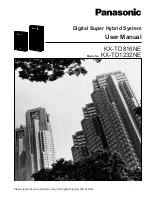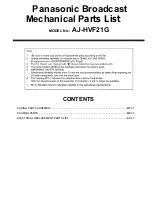
45
MAINTENANCE:
(Con’t)
BE ADVISED: NEVER USE THE FOLLOWING
ON STAINLESS STEEL:
Aqua regia
Ferric chloride
Iodine
Sodium acid
Sodium azide
Chemical spills, especially those agents listed here, should be removed
as soon as possible and the stainless steel surface cleaned with mild soapy
water followed by a clean water rinse.
CLEANSING AGENTS:
Anti-fungal and anti-bacterial additives are permissible to use as long as
the pH of the aqueous solution is kept within the range of 7 to 9. These are
available through laboratory distributors. But, be sure to CONFIRM that they are
not harmful to stainless steel.
STAINLESS CLEANING METHODS:
Do not use any metallic pads. Instead, for stubborn stains, use a plastic
light-duty cleansing pad and rub GENTLY in the direction of the metal grain.
If stains continue to persist, use one of the following chemicals and methods.
CAUTION:
EXTREME CARE MUST BE TAKEN WHEN HANDLING THESE
MATERIALS. ALWAYS WORK IN AN AREA WITH ADEQUATE
VENTILATION. USE THE PRECAUTIONS AS OUTLINED IN THE
MATERIAL
SAFETY DATA SHEET
(MSDS) AND THE MANUFACTURER’S
INSTRUCTIONS FOR THE PRODUCT BEING UTILIZED. ALSO, FOLLOW THE
PERSONAL PROTECTION INDEX FOUND IN THE
HAZARDOUS MATERIALS
INFORMATION SYSTEM
(HMIS) SECTION OF THE
MSDS
.
NOTE:
THE USE AND DISPOSAL OF THESE CHEMICALS MAY BE REGULATED BY YOUR
LOCAL CITY CODES; CONSULT THOSE REGULATIONS BEFORE OF DISPOSING OF THESE
MATERIALS.
•
Any of a variety of “scale removers” available at local supermarkets or
hardware stores used for the cleaning of coffee marks, humidifiers or
vaporizers.
•
A 15% to 35% phosphoric acid solution available from laboratory supply
distributors for scale and rust removal. Allow solution to soak the surface
affected until rust and scale is loosened. Immediately follow with a clean
water rise.
Artisan Technology Group - Quality Instrumentation ... Guaranteed | (888) 88-SOURCE | www.artisantg.com










































